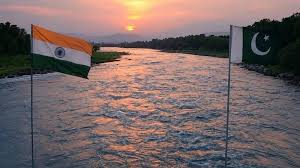
India’s long-standing water-sharing policy with Pakistan is being altered as a result of the Pahalgam attack.
There has been a significant change in India’s long-standing policy of keeping its Indus Water Treaty with Pakistan independent from political and military concerns since terrorists killed 26 tourists in Pahalgam, Jammu and Kashmir.
An important step was taken on April 23 when the Indian government decided to suspend the Indus Waters Treaty (IWT). According to the administration, Jammu and Kashmir has been the explicit target of “continued cross-border terrorism by Pakistan,” and the unpredictability brought on by these assaults has hindered India’s ability to fully exercise its rights under the treaty
Pahalgam attack_ Indus Waters Treaty Explained [READ FULL TEXT]
The office of Pakistani Prime Minister Shehbaz Sharif, meantime, reacted forcefully, declaring that it would be deemed a “act of war” to obstruct or divert the water flow in contravention of the treaty.
Questions concerning the future and significance of the 65-year-old Indus Waters Treaty have been raised by the widening diplomatic gap between the two nations.
Here is a brief synopsis of the pact and its significance:
- India and Pakistan signed the Indus Waters Treaty in 1960 as part of a water-sharing arrangement mediated by the World Bank.
- It regulates how the two countries share the waters of the Indus River and its tributaries.
- Despite multiple wars and tensions over the decades, the treaty has remained intact, often seen as a rare example of cooperation between the neighbors.
The treaty’s long-term viability has been called into question by the recent events, which also portend a possible new stage in India-Pakistan ties where water diplomacy would no longer be immune to larger geopolitical disputes.
WHAT IS THE INDUS WATERS TREATY?
WHAT ARE THE CONCERNS OVER WATER?

For what length of time can India stop the water flow from the Indus River?
The Indus, Jhelum, and Chenab rivers require significant infrastructure, which India does not yet have, thus stopping their flow won’t happen quickly. It would take years to construct reservoirs and dams to regulate these rivers.
India still lacks the infrastructure needed to fully utilize the waters from the western rivers, even though it has already used almost 95% of its share of water from the eastern rivers, according to a report by The Print.
Currently, work is in various stages of implementation in four hydropower plants—850 MW Ratle, 1,000 MW Pakadul, 624 MW Kiru and 540 MW Kwar—on the Chenab to harness the water for electricity,” the report said.






